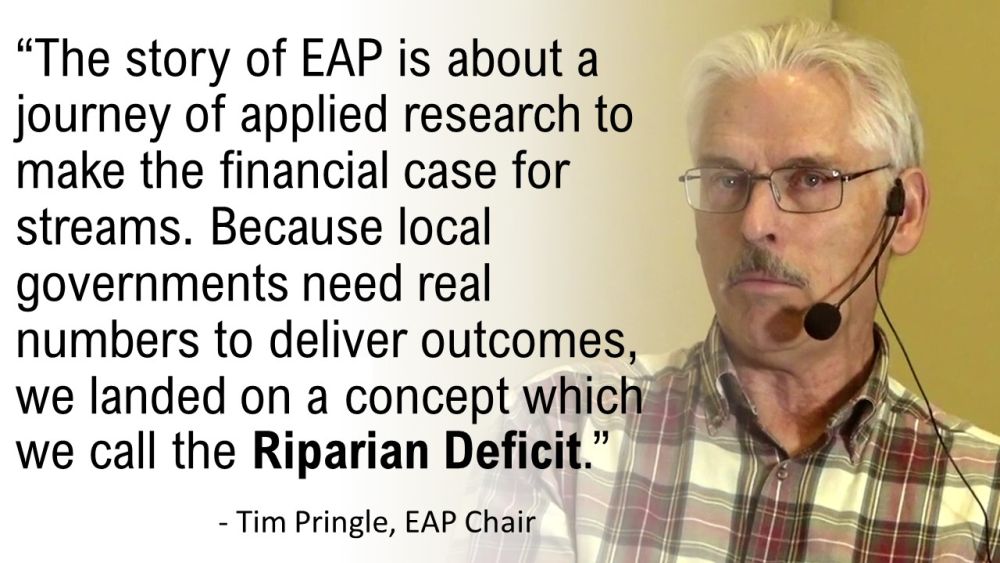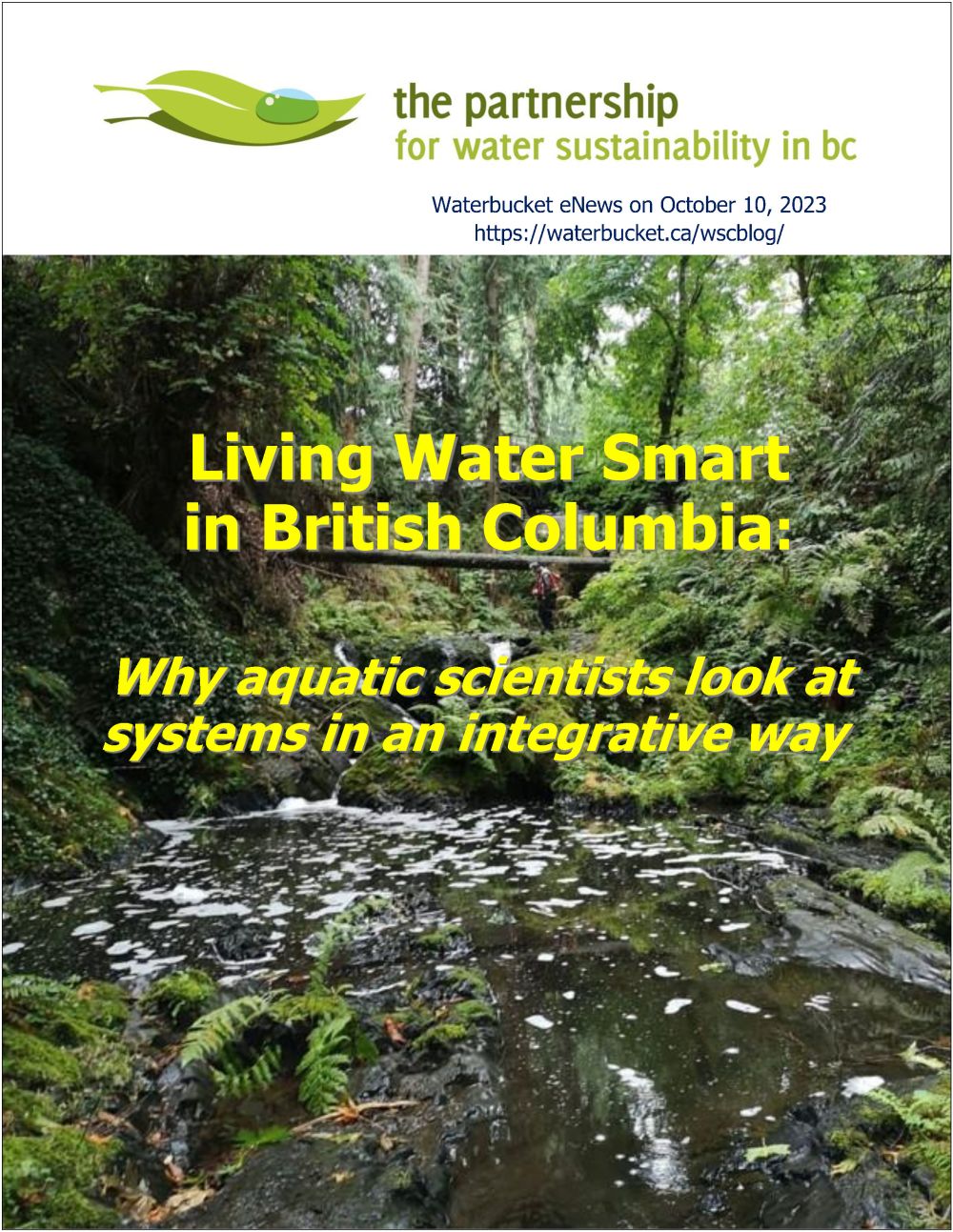BRING SCIENCE INSIDE LOCAL GOVERNMENT: “The job of a scientist is to provide the best advice to help people make a good decision,” stated Dr. Dave Preikshot, Senior Environmental Specialist with the Municipality of North Cowichan
Note to Reader:
Published by the Partnership for Water Sustainability in British Columbia, Waterbucket eNews celebrates the leadership of individuals and organizations who are guided by the Living Water Smart vision.
The edition published on October 10, 2023 featured extracts from a conversational interview with Dr. Dave Preikshot, Senior Environmental Specialist with the Municipality of North Cowichan on Vancouver Island. Dave Preikshot collaborated with the legendary Daniel Pauly on fisheries research projects at the University of BC from 1995 through 2007.
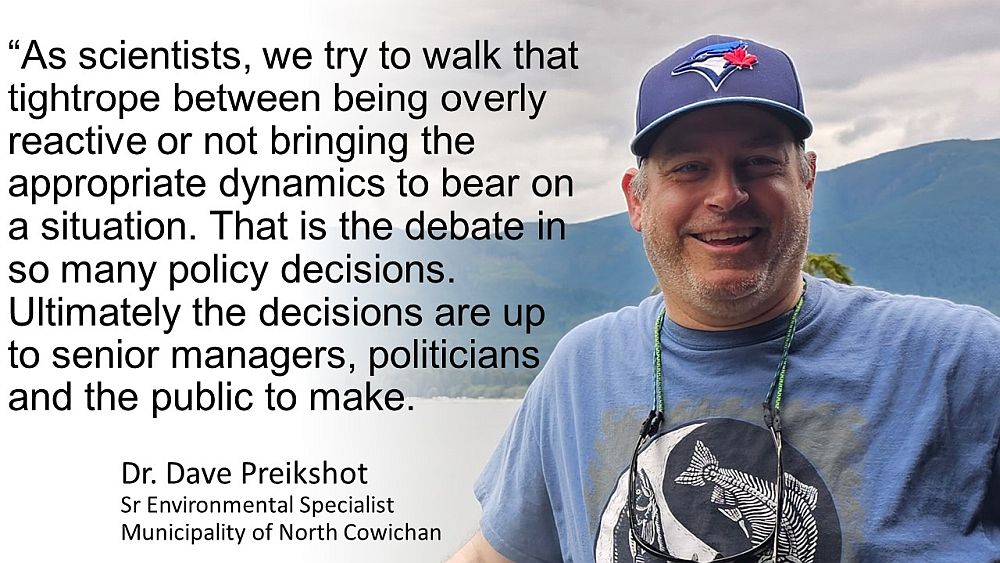
Living Water Smart in British Columbia Series
To download a copy of the October 10, 2023 edition as a PDF document for your records and/or sharing, click on Living Water Smart in British Columbia: Why aquatic scientists look at things in an integrative way. In the meantime, scroll through the online version posted below.
DOWNLOAD: https://waterbucket.ca/wcp/wp-content/uploads/sites/6/2023/10/PWSBC_Living-Water-Smart_Dave-Preikshot-on-Shifting-Baseline-Syndrome_2023.pdf
“The job of a scientist is to provide the best advice to help people make a good decision,” states Dr. Dave Preikshot
Every generation is handed a world that has been shaped by their predecessors – and then seemingly forgets that fact. In a short-but-influential paper published in 1995, legendary UBC fisheries scientist Dr. Daniel Pauly coined the term Shifting Baseline Syndrome to characterize environmental degradation.
Since 2014, the Partnership has been drawing attention to the Shifting Baseline Syndrome for two reasons. One, it helps explain why urban streams continue to degrade. And two, it helps underpin the financial case for tackling the Riparian Deficit.
A baseline creeps imperceptibly downwards over generations
When Daniel Pauly joined the UBC faculty three decades ago, Dr. Dave Preikshot was one of his first two graduate students. They collaborated on research projects from 1995 through 2007. Dave Preikshot is now the Senior Environmental Specialist with the Municipality of North Cowichan.
The “story behind the story” of Dave Preikshot provides insights that will inform his peers in local government as well as elected representatives about protecting streams and reducing risks.
We often limit ourselves to sustaining leftovers:
“The opportunity to learn from Daniel Pauly and do ecosystem modelling at the UBC Fisheries Centre was fantastic because I got to do work on ecosystem projects in Puget Sound, Alaska, Iceland and Chesapeake Bay,” recalls Dave Preikshot.
“A lot of our focus right now is recognizing the value of First Nations oral history and First Nations environmental knowledge. What I learned from Daniel Pauly about the Shifting Baseline Syndrome in the 1990s predisposed me to thinking along these lines.”
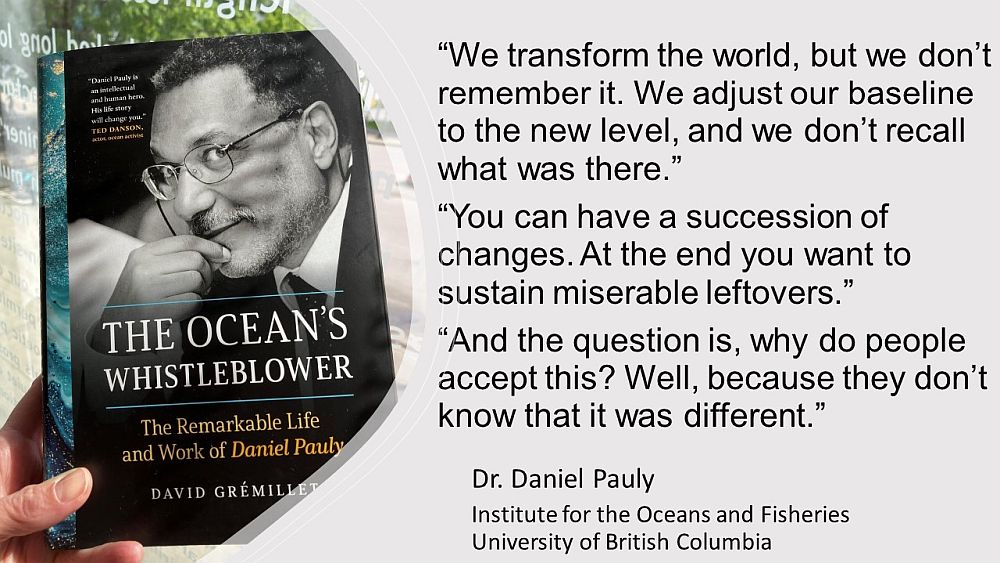
EDITOR’S PERSPECTIVE / CONTEXT FOR BUSY READER
“In the interview that follows in the “story behind the story”, Dr. Dave Preikshot talks about his 12-year university career from 1995 through 2007 when he worked with Daniel Pauly and how this experience prepared him for his current role as an environmental scientist working in local government,” stated Kim Stephens, Waterbucket eNews Editor and Partnership Executive Director.
“As Dave shared his story, I was struck by his career parallels with Dr. Chris May of Washington State who we featured in a March 2023 edition of Waterbucket eNews with a story about the Road Map for Stream System Integrity.”
“In the 1980s, both were naval officers. In the 1990s, both were inspired to return to university and do their PhD degrees. In the 2000s, both joined local government to make a difference at the local scale where it matters most.”
“Interestingly, both believe that their naval leadership experience gave them a strong foundation for their careers in academia and local government.”
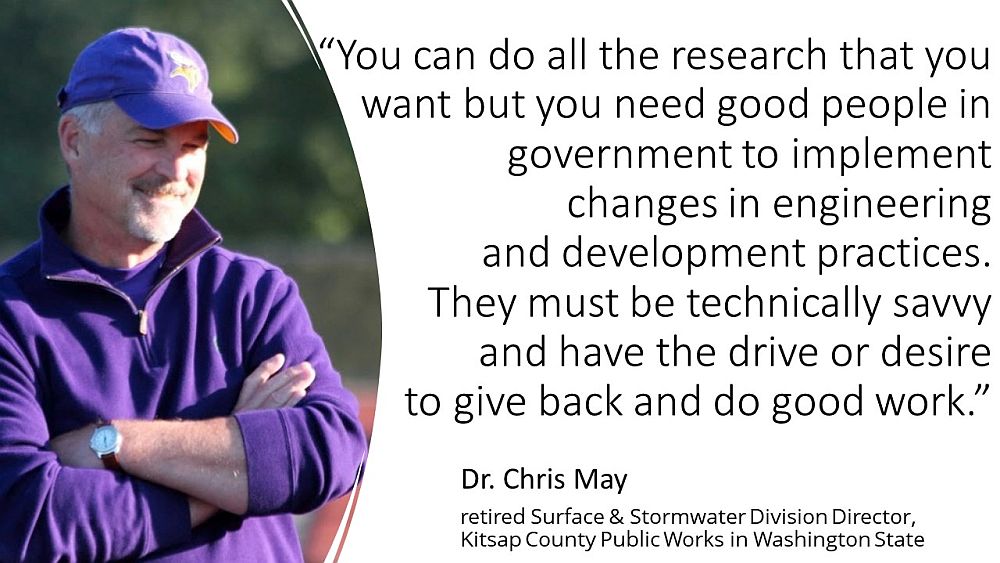
Science, watershed-based drainage planning, and the Ecological Accounting Process
“In the October 3rd edition of Waterbucket eNews, Jim Dumont asked the question: Why have the practitioners of Rainwater Management in British Columbia fallen behind the West Coast states in protecting streams and reducing risk?”
“My interview with Dave Preikshot sheds more light on Jim Dumont’s question. In North Cowichan, at least, Dave Preikshot has brought science inside local government. That is a good news story because the science-based, whole-system approach to drainage planning and design has generally been missing in British Columbia for more than a decade.”
Intergovernmental collaboration founded on science-based understanding:
“During my conversation with Dave Preikshot, we touched on the context for the decision by North Cowichan to step up and be a founding member of the EAP Partnership. This initiative is in collaboration with the City of Nanaimo, Regional District of Nanaimo, UBCM, Vancouver Island University and Partnership for Water Sustainability.”
“The EAP Partnership is embedding EAP, the Ecological Accounting Process, at the Mount Arrowsmith Biosphere Research Institute (MABRRI) at Vancouver Island University. The initial commitment is a 3-year transitional program to invest in youth and train future generations of local government staff.”
“The EAP Partnership is described as a model for other communities and governments. According to Dr. Max Blouw : It fits well with the ambition of the Research Universities’ Council of BC to support strong working relationships between post-secondary institutions and local governments and communities.”
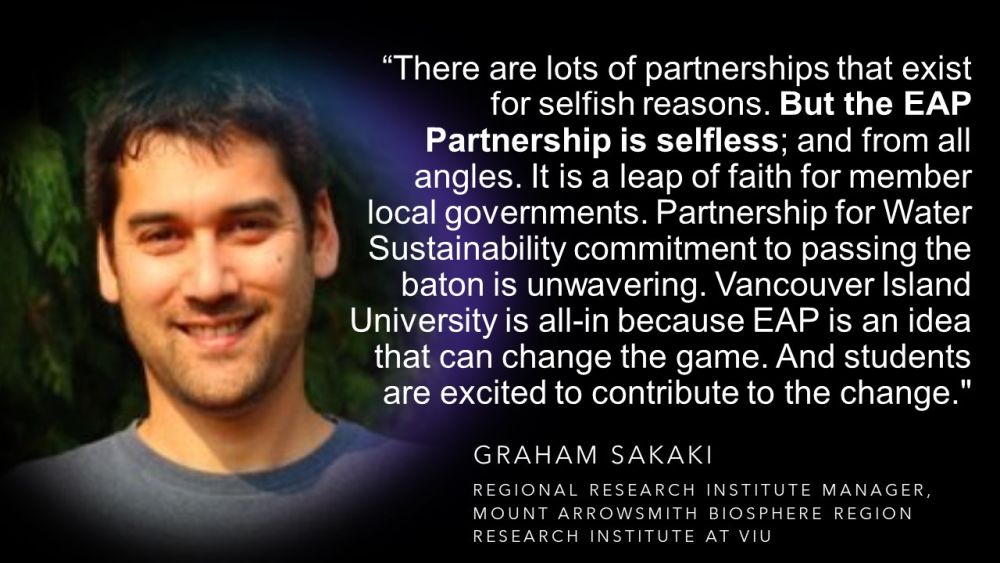
STORY BEHIND THE STORY: A conversation with Dr. Dave Preikshot about why aquatic scientists look at systems in an integrative way
“One of the greatest benefits I got from my naval service was being able to own up to mistakes when I made them and to admit that in front of people and work towards resolving those errors.”
“Later at UBC, I found that owning and correcting mistakes is very much in keeping with a scientific perspective where the goal is not necessarily to reinforce what you already believe, but to find out where you may have been wrong.”
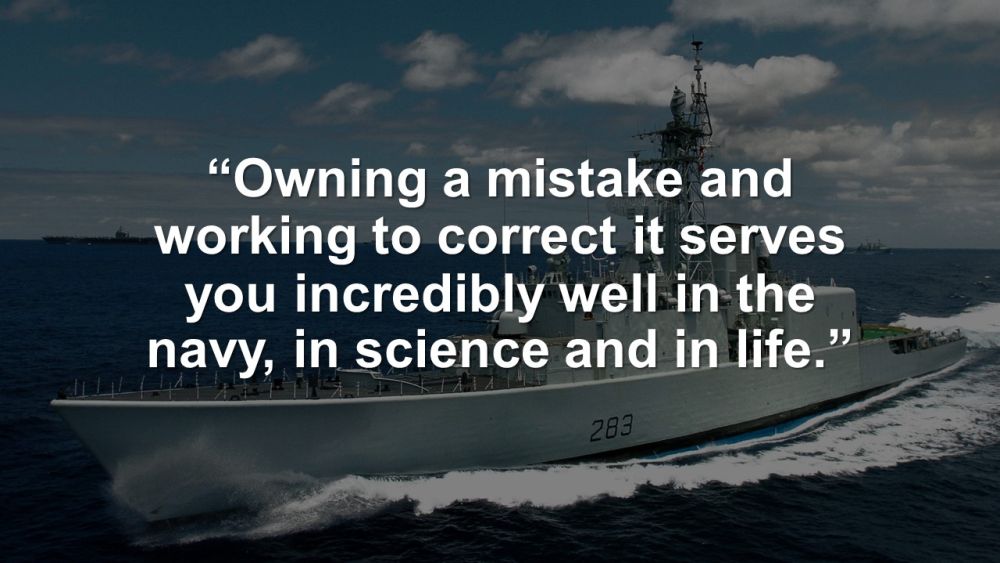
Understand the whole-system context
“Imagine a world in which all things are birds where they can be in all places, on the ground and in the sky and in the trees. There is almost no barrier to them moving around. That is what it is like for fish. They fly in the sea.”
“When you think about land animals, they tend to be prisoners of topography and vegetation. But in the sea, it is really not the case.”
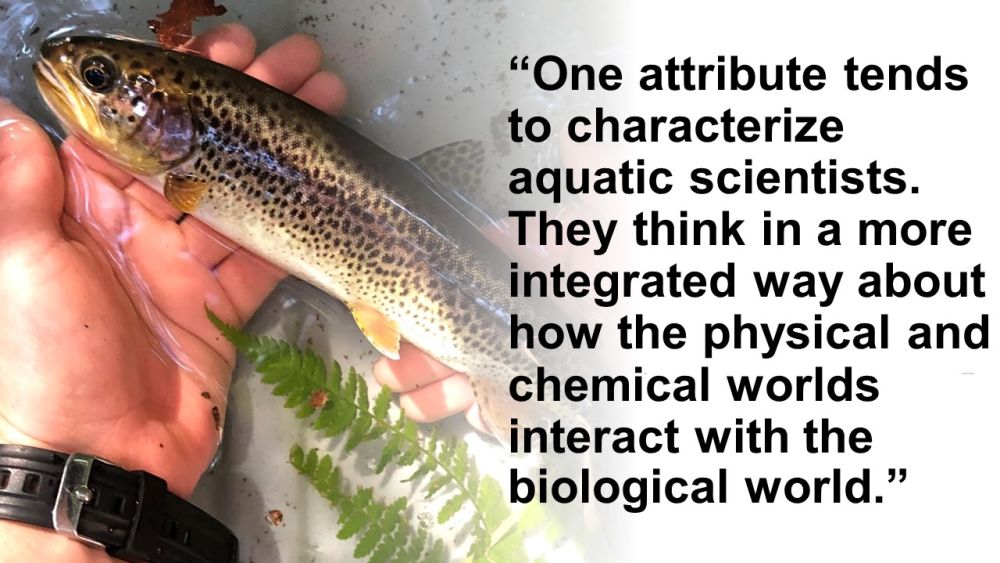
“Aquatic Scientists are thus confronted with this 3-D world and the physics and chemistry of that 3-D aquatic environment as a necessary component of how they understand the organisms that live in that environment.”
You can get a handle on uncertainty
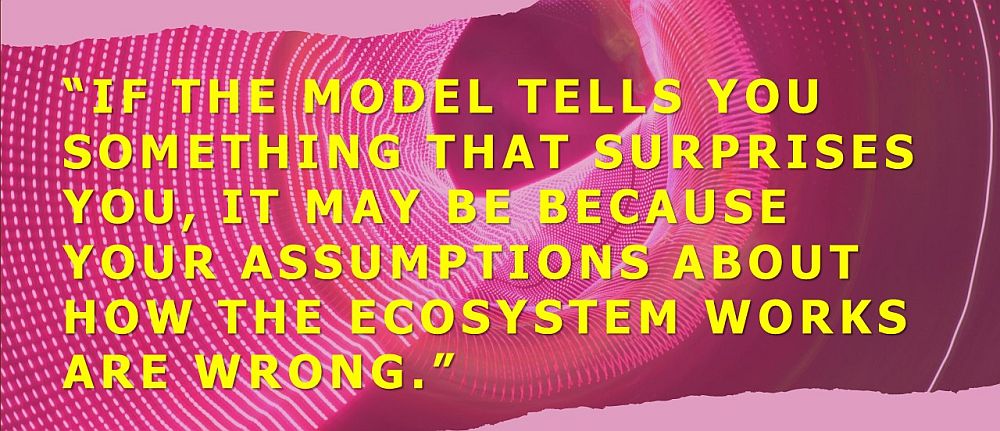
“The misconception about modelling often is that modelling is to confirm what you know. In fact, a huge benefit of modelling is helping identify what you do not know, and in doing so, get a handle on uncertainty rather than trying to confirm what you already believe.”
Why not choose to be courageous?
“I do believe that scientists need to talk to politicians, managers, and members of the community. And that is what I do in my current role with North Cowichan. However, all you can do as a scientist is provide the best quality of information possible to help them decide what they want to do.”
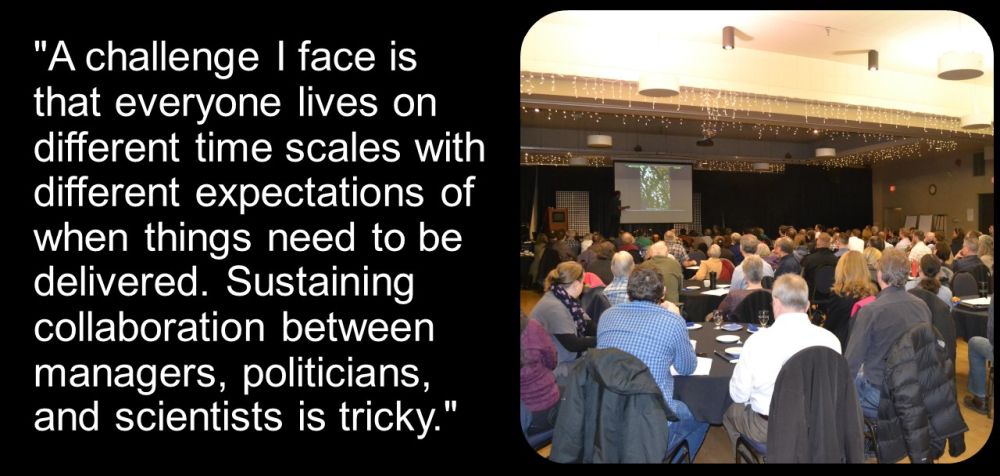
“If you are talking about how ecosystem changes occur, those are at minimum multi-year and at most multi-decadal exercises. And as I learned from working with Daniel Pauly, it is recognizing that you can choose to be courageous in restoring ecosystems.”
Interweaving Indigenous knowledge and Western science fosters reconciliation
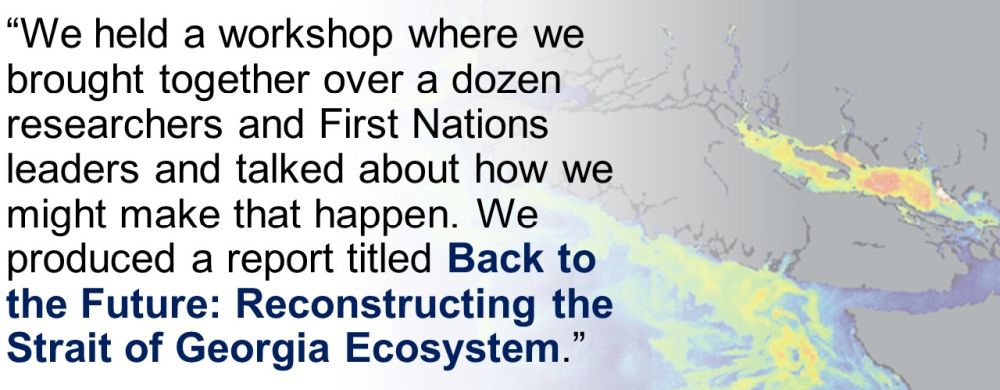
“As time went on, and we amassed scientific and archeological evidence, it really became apparent that this First Nations oral information was often quite accurate. It indicated a wealth of fish resources that had existed and does not exist anymore in many places.”
Communities need annual budgets to tackle the Riparian Deficit along streams
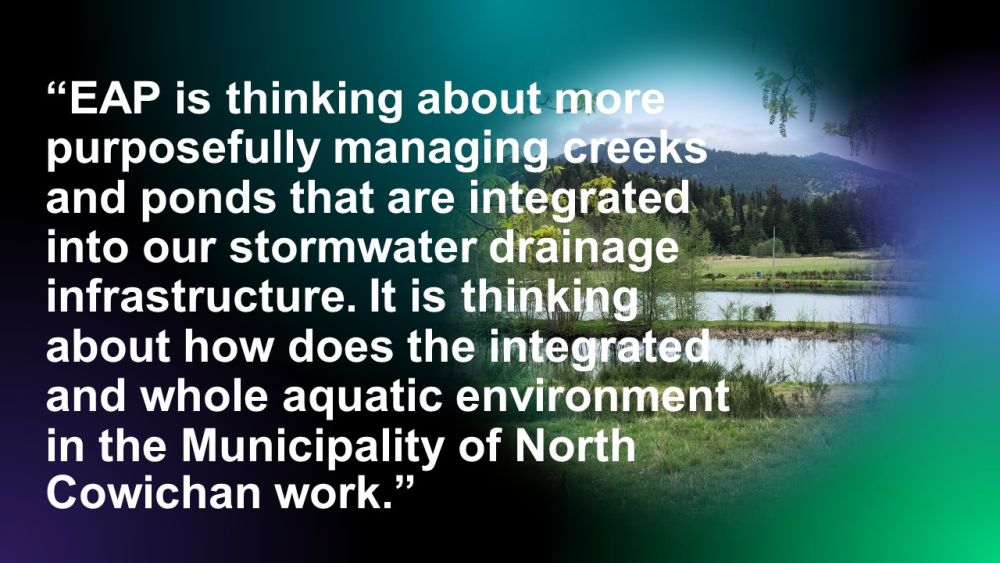
|
“The Richards Creek EAP Project is tied in with that because of how it integrates to that whole watershed and municipal drainage story.”
|
